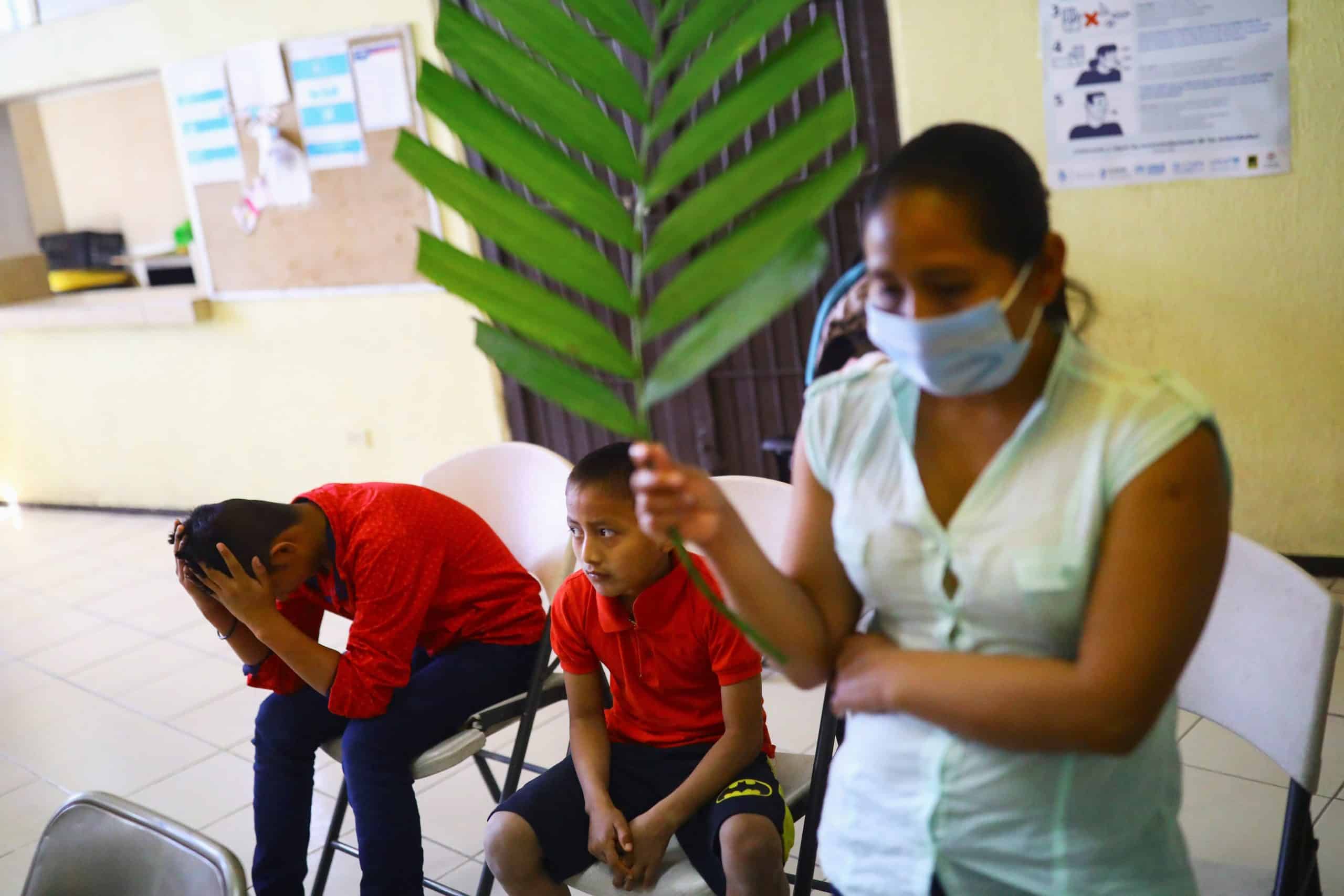Does your local parish have a Spanish Mass? Maybe Vietnamese, Portuguese, or another non-English language?
It is a trend that has been growing over the past few decades, with 29% of U.S. parishes celebrating Mass in a language other than English as of 2010. Incorporating one or more ethnic groups into a single parish creates a “shared parish” where shared spaces are negotiated between ethnic groups under the umbrella of a single parish. These parishes welcome migrant communities and enrich the local church.
The shared parish fits with the times. We live in a transnational world of globalization and multinational corporations, along with unprecedented levels of migration.
The motives for migration to the United States remain varied. Violence, like the drug-related gang violence in Mexico and Central America, drives refugees and asylum seekers to leave their homes in search of safety, while pronounced economic disparity between the United States and many of its neighbors impels others to migrate in search of work.
In this milieu of a globalized world, the Catholic Church acts transnationally across borders and, in fact, is well positioned to do so.1 Migrants, particularly the large percentage from Latin America who are Catholic, benefit in various ways from the transnational nature of the Church. This is certainly clear in the proliferation of shared parishes. But it is important to note that the relationship is mutually beneficial, as the U.S. Catholic Church benefits from the richness and diversity brought by migrants.
Simply put: migrants need the Church, and the Church needs migrants.
*****
The urgency of this attentiveness to the mutually beneficial relationship between migrants and the Church remains pressing in the United States. President Trump made anti-immigration policies a rallying cry of his presidency, beginning with shouts of “Build the Wall” during his campaign. He is out of office now, but the ramifications of four years spent weakening channels for legal entry, failing to address backlogs of asylum claims, and freezing hires in the Office of Refugee Resettlement have slowed the Biden administration’s ability to respond to rising levels of migrants in 2021.
Crowded migrant shelters filled with children are proving to be a serious test of President Biden’s first hundred days in office. Meanwhile, Republican senators have tabled any talks about pathways to citizenship for undocumented immigrants until the rising number of migrants at the border is addressed to their liking.
In contrast to unstable political rhetoric around migration, the official teachings and pronouncements of the U.S. Catholic Church stand in strong defense of migrants. There is a long tradition of Catholic Social Teaching supporting the rights of people to migrate.
The document “Strangers No Longer” published in 2003 by the U.S. Conference of Catholic Bishops (USCCB) along with the Catholic bishops’ conference of Mexico outlines extensive proposals for public policy changes in the United States in favor of migrants, including broadening legal avenues for migration, providing paths to legalization for undocumented migrants, and a review of enforcement tactics that lead to abuse, discrimination, and death. These are bold political recommendations coming from the Church, and they are desperately needed.
*****
Migrants need the Church.
In the midst of anti-immigration rhetoric and policies, the Church can advocate on behalf of migrants’ rights, giving voice to those who are too often left voiceless. For example, in the wake of publishing “Strangers No Longer,” the USCCB formed the Justice for Immigrants campaign to unite and mobilize Catholic institutions and individuals in support of immigration reform. Catholic Charities USA and the Catholic Legal Immigration Network are two other examples of Catholic organizations committed to defending the rights of immigrants and advocating for policy change.
Beyond advocacy efforts in the United States, various Catholic-based organizations are working to care for migrants at every step of their journey. Dozens of shelters along the migrant corridor through Mexico offer food, medical services, and a place to rest along the dangerous route through the country. Organizations like the Kino Border Initiative operate along the U.S.-Mexico border assisting those in transit and those who have been detained or deported. The Mujer y Familia Migrante program by Jesuit Migrant Services in Mexico provides supportive interventions for families separated by migration, including mental health support groups and revenue-generating projects. This host of ministries advocates, supports, and accompanies migrants in transit and upon arrival, and cares for the communities they leave behind.2
These efforts could easily be amplified and expanded if more parishes join the fray in advocating and working on behalf of migrants. While the messaging in official church teaching has been clear in support of migrants, this message does not always get filtered down to the pews of the average Catholic in the United States. Have you heard Church teachings on immigration preached about in your own parish? Migrants need support and advocacy from the Church, and not just from a select few parishes and organizations.
Just as importantly, migrants need the Church for the spiritual assistance their faith provides and the cultural connections drawn through Church participation. The migrant journey to the United States from Central America and Mexico is often fraught with difficulties and dangers. Many migrants pray for an intercessor, like the Virgin Mary or a particular Marian apparition, to accompany them on their journey. Rosaries or other small, portable religious artifacts are often among the few possessions that migrants bring with them. Migrants are drawing on their faith and religious experiences to find strength and hope along their journey.
Upon arrival in the United States, encountering a welcoming parish can help migrants adapt to their new context and feel connected to their homeland, especially when liturgies and ministry are offered in their native language. It can be a powerful emotional experience for a person to hear their native language used for public prayer in a country dominated by a foreign language and amid rising anti-immigrant sentiment in the public sphere.
For the advocacy efforts and humanitarian aid, for spiritual assistance and cultural connections, migrants need the Church.
*****
The Church needs migrants.
The U.S. Catholic Church likewise benefits from the presence of migrants. Let me begin by stressing that this is not because of the baseless claims that the Church supports migration to simply fill churches. The Church needs migrants because they carry ideas, introduce skills, and build bridges across cultures.
Coming from a different country and context, migrants can bring a broader understanding of what religion is and where to find it. When Latin American migrants introduce devotional practices like home altars, or host public events like a celebration for Our Lady of Guadalupe, it enriches the U.S. Catholic Church.
Migrants can also model lay leadership, as some migrants come from remote communities without a resident priest. By necessity, this reality creates a culture of strong lay leadership. Bringing these experiences to the U.S., migrants can help to encourage greater participation from the laity in parishes here.3
Shared parishes between ethnic groups, including English- and Spanish-speaking populations, can be the source of meaningful intercultural encounter. Pope Francis has made “encounter” an important theme of his pontificate. He introduced this concept in his homily on the Vigil of Pentecost in 2013: “It is important to be ready for encounter. For me this word is very important. Encounter with others. Why? Because faith is an encounter with Jesus, and we must do what Jesus does: encounter others.”
That being said, there is a high risk in shared parishes of “cultural encapsulation,” where distinct cultural communities function in parallel with only limited interaction in negotiating shared spaces. Maybe there are weekend Masses in English and Spanish, but do those populations ever intermingle? Just bumping into each other in the parking lot is not enough to engender mutual understanding. In fact, it can cause tension and lead to avoidance between groups.
But the potential remains high in shared parishes for creating social spaces of community dialogue where new perspectives can be offered and social networks can be grown across groups. Healthy dialogue can break down stereotypes and build relationships. This form of encounter benefits all, including migrants and native-born citizens in the parish.
For the new practices and devotions introduced into parishes, for modeling lay leadership, and for the opportunities for intercultural encounter, the U.S. Catholic Church needs migrants.
*****
With rising numbers of migrants reaching our southern border, we need to be reminded of the mutually beneficial relationship between the Church and migrants in our transnational world.
Migrants look to the Church to provide service and aid along the journey and advocate for their rights when they are not given a voice. Migrants draw spiritual fruits from their faith to help them through the dangers and difficulties of migration, and they find safe spaces of comfort and strength where they can practice their faith in shared parishes.
The U.S. Catholic Church needs migrants for the new practices and devotions they bring, for the broader understanding of the faith they offer, and for their modeling of lay leadership. Shared parishes that bring together multiethnic populations are a source of great potential for intercultural encounter that can build bridges and create networks between groups. Rooted in faith and compelled by Church teaching, parishes in the United States need to respond to the signs of the times to create welcoming spaces and increased advocacy efforts on behalf of migrants.
We do not need a bigger wall. We need more bridges. Because migrants need the Church, and the Church needs migrants.
- For more, read The Transnational Villagers by Peggy Levitt. ↩
- For more, read “Mexican Migration-Corridor Hospitality” by Alejandro Olayo-Méndez, Stephen Nathan Haymes, and Maria Vidal de Haymes. ↩
- For more, read “Re-defining the boundaries of belonging: the trans-nationalization of religious life” by Peggy Levitt. ↩


